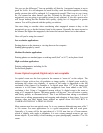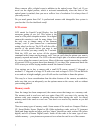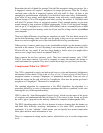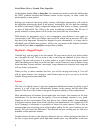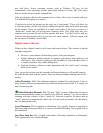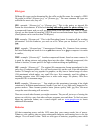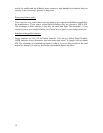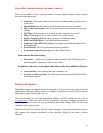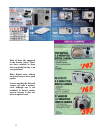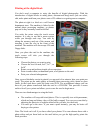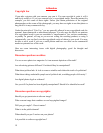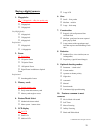
14
File types
Different file types can be determined by the suffix on the file name, for example, a JPEG
file might be called “filename.jpeg” or “filename.jpg.” The most common file types are
sufficient for most uses, they are:
JPG: example: “filename.jpg” or “filename.jpeg.” This is the native or internal file
format for most cameras. It is the best starting and ending point for photo editing. It is
a compressed format, and you will get good results even with small files. Rule of thumb:
Always use this format for emailing. NEVER send an email attachment larger than 500k.
(Good photos can be sent less than 250 Kbytes.)
PSD: example: “filename.psd.” This is the Photoshop format. It contains all the working
information. Use this format as you work on a file. When you are finished “save as” a
.jpg.
BMP: example: “filename.bmp.” Uncompressed bitmap file. Common from scanners.
Pull into Photoshop and work on it as a .psd then convert to a .jpg to compress it to make
it smaller.,
TIFF: example: “filename.tiff.” Another compressed format, found on some cameras. It
is good for taking pictures and getting them into the editor. Although compressed, this
format is lossless, so some prefer it for high resolution editing and publishing.
GIF: example: “filename.gif.” The original file compression format promulgated in the
early days of computer photos. It is still used extensively on the web: it has an animation
feature. Gif images are very popular for graphics, as they have a limited range of colors
(256 maximum) which makes very small file sizes. Not commonly used for editing or
emailing anymore, since JPG images have a wider color range. For photos, JPGs have
surpassed GIFs in common usage.
RAW: example: “filename.raw.” You might see this proprietary (meaning it has slight
variations by different manufacturers) format if you have a very high end 6 megapixel or
greater camera. These formats promise better picture quality than .jpg files, but most
except the most discerning will not notice.
There are several other formats you might encounter. They are all just ways of storing the
picture on a disk in a way that other software programs can read them. To find out more
about any particular format, use a search engine such as www.google.com
to locate
additional information.
Batteries
All that computing power and the LCD mean that your camera needs lots of power.
Whatever your camera, plan on using rechargeable batteries and learning how to use the
charger. You will need it often. There are two types of batteries, proprietary ones which



